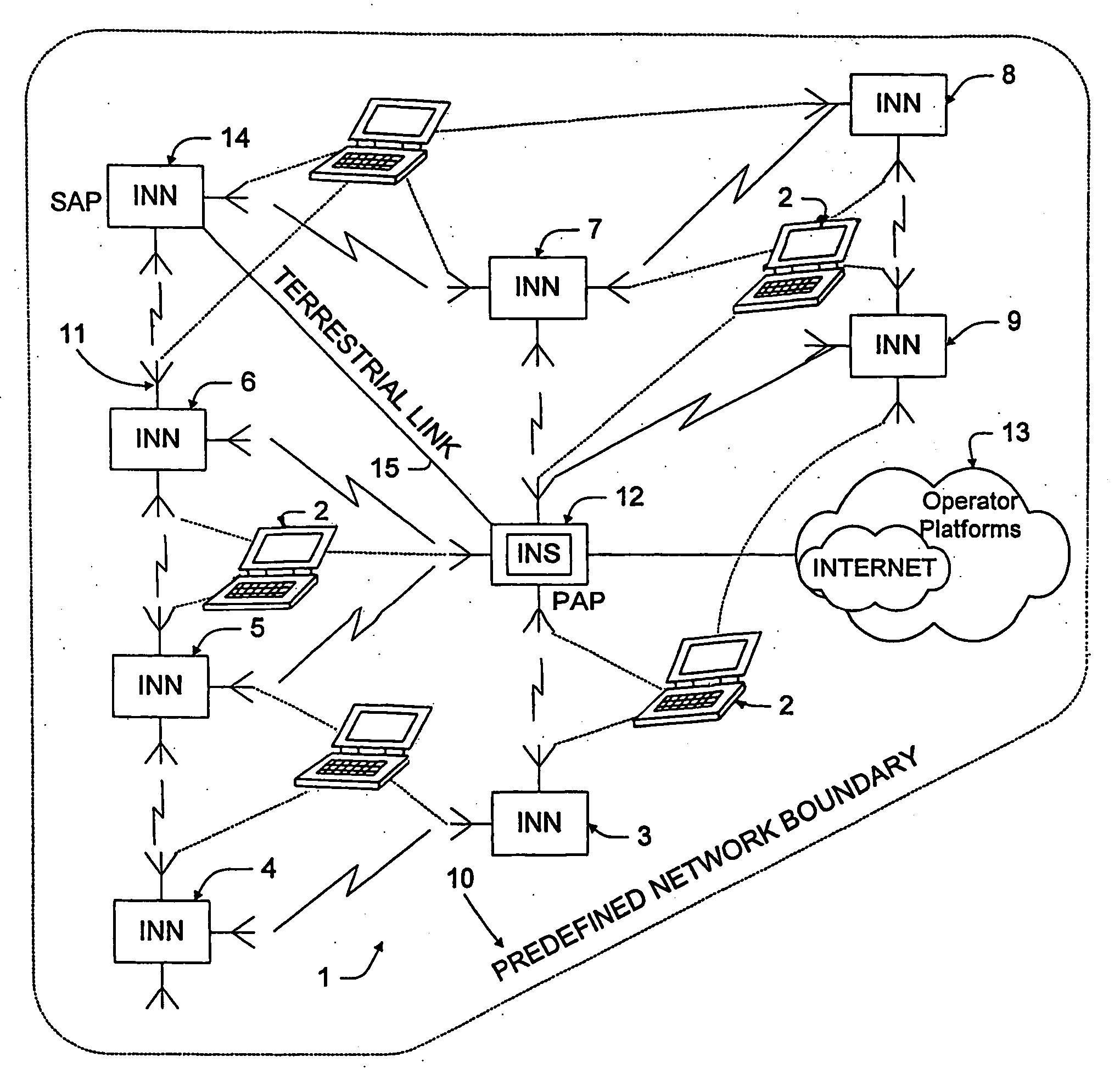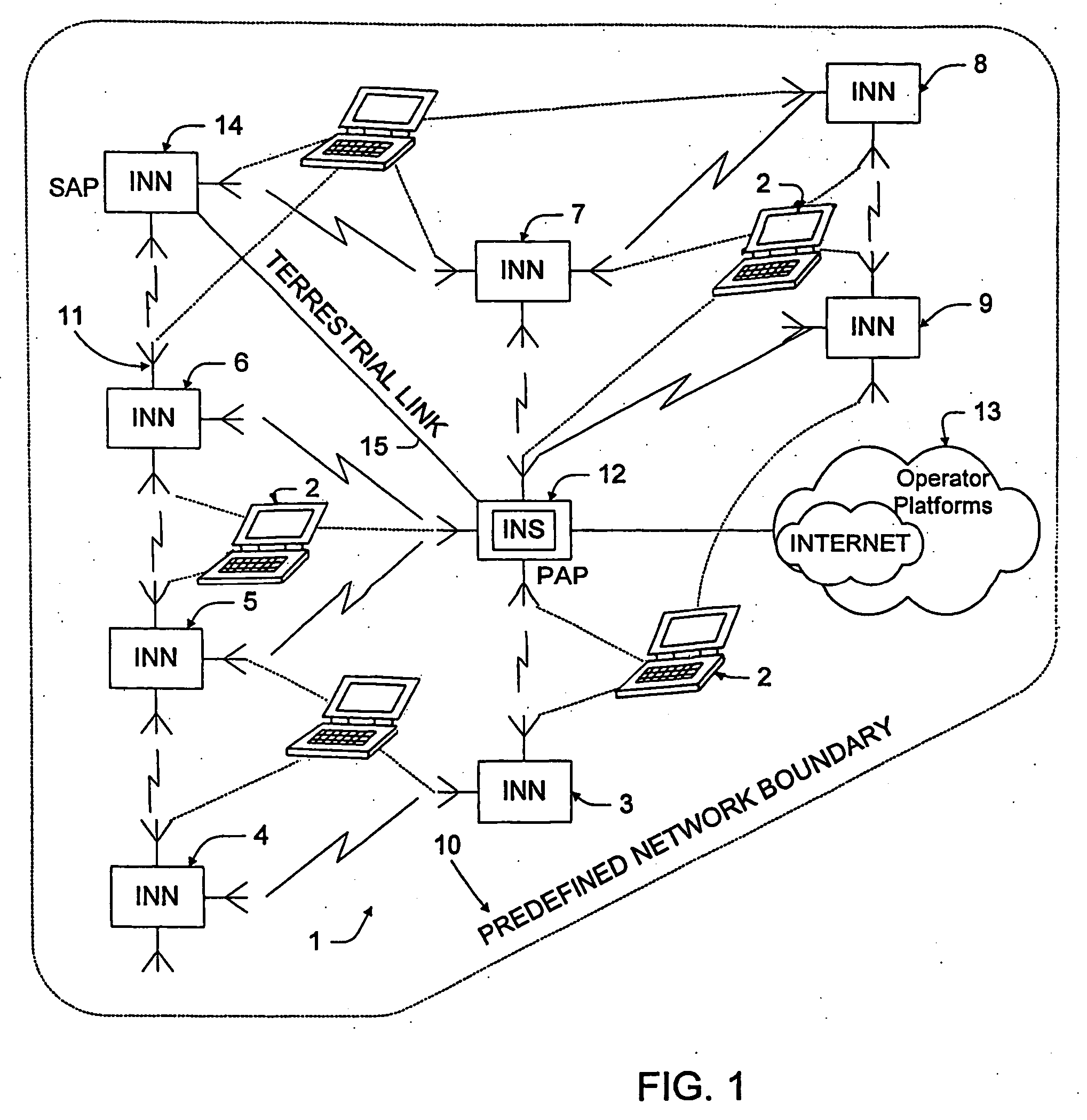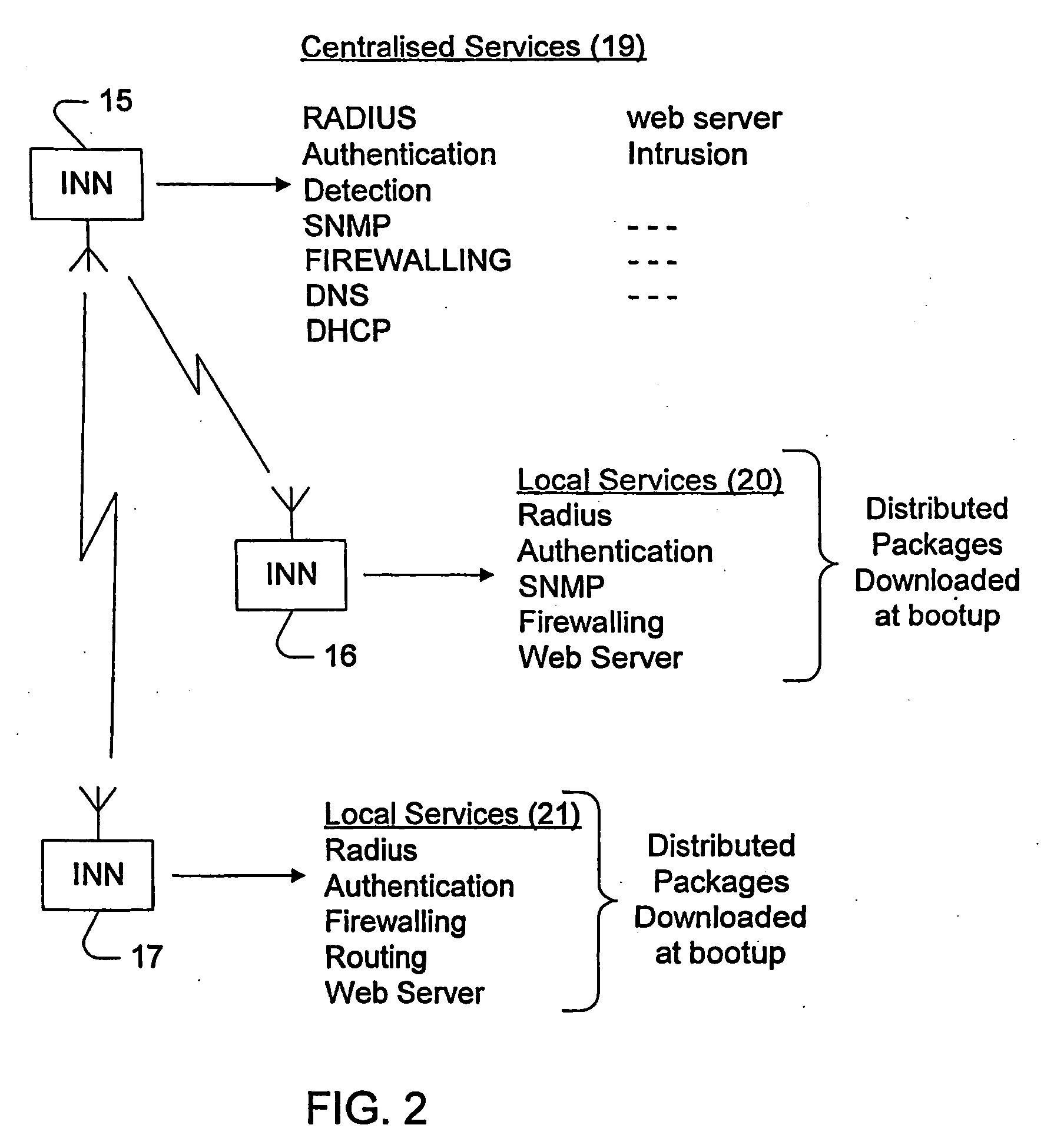Wireless networking system and method
- Summary
- Abstract
- Description
- Claims
- Application Information
AI Technical Summary
Benefits of technology
Problems solved by technology
Method used
Image
Examples
Embodiment Construction
[0024] In the preferred embodiment, there is disclosed a wireless networking system, consisting of wireless networking elements hereinafter called intelligent network servers (INS) and intelligent network nodes (INN), which facilitate rapid and effective wireless network operations across metropolitan-wide areas.
[0025] Turning initially to FIG. 1, there is illustrated schematically 1 the operational environment of the preferred embodiment. In this environment, a series of mobile communication devices e.g. 2, which can include computers or the like, are interconnected by a wireless networking system of INNs e.g. 3-9, within a predefined network boundary e.g. 10. Each INN can include a series of IEEE 802.11 compliant radio transceivers e.g. 11 with the radio transceivers acting to interconnect between INN nodes (POPs) in addition to communicating with mobile communication devices e.g. 2. A primary aggregation point (PAP) e.g. 12 is further used to house intelligent network servers (I...
PUM
 Login to View More
Login to View More Abstract
Description
Claims
Application Information
 Login to View More
Login to View More - R&D
- Intellectual Property
- Life Sciences
- Materials
- Tech Scout
- Unparalleled Data Quality
- Higher Quality Content
- 60% Fewer Hallucinations
Browse by: Latest US Patents, China's latest patents, Technical Efficacy Thesaurus, Application Domain, Technology Topic, Popular Technical Reports.
© 2025 PatSnap. All rights reserved.Legal|Privacy policy|Modern Slavery Act Transparency Statement|Sitemap|About US| Contact US: help@patsnap.com



